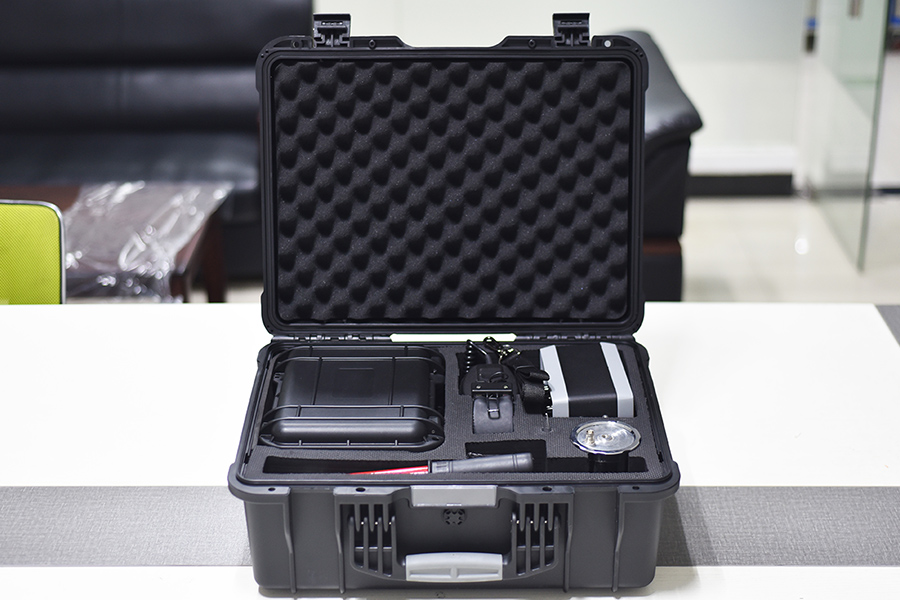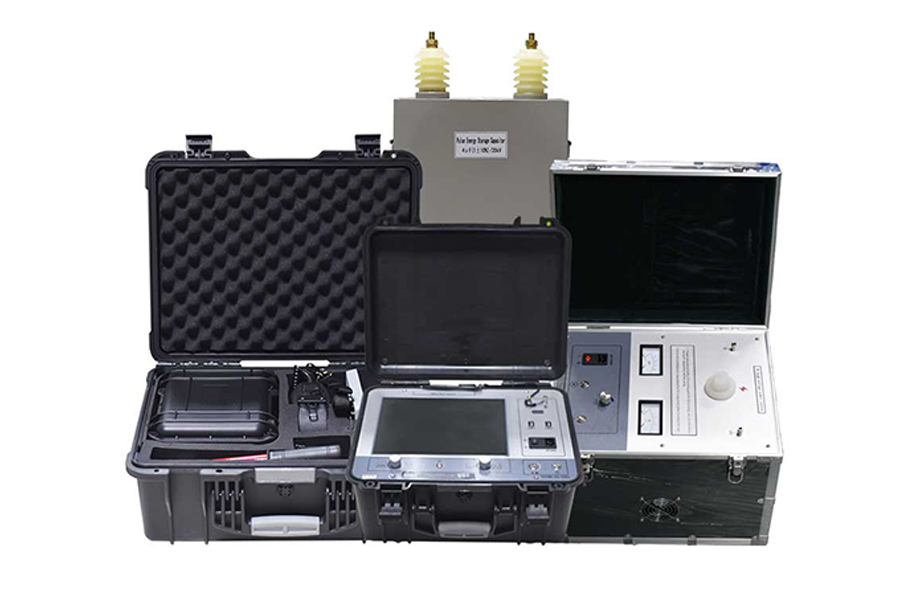When the internal medium of a cable experiences a fracture fault, the exact location cannot be seen when it is wrapped with insulation skin, including strong and weak currents. The usual approach to finding a breakpoint is to investigate it in sections. So what are the commonly used methods for accurately measuring wire and cable break points?

1. Multimeter detection method
Firstly, connect one end of the entire cable that is not working to a strong live wire, and leave the other end empty. Turn the multimeter to the AC2V position, starting from the power terminal of the cable. While pinching the black pen tip, slowly move the red pen along the insulation of the wire. At this time, the voltage displayed on the display screen is approximately 0.445V. When the red probe moves to a certain position, the voltage displayed on the display screen suddenly drops to a few volts, approximately one tenth of the original voltage. The breakpoint is located about 15cm forward from this position (at the end of the live wire connection).
2. Inductive electric pen detection method
Induction test pen is a device with an electronic screen that can detect voltage on and off. Firstly, eliminate the power supply of the cable around the breakpoint cable, and then connect the cable with the breakpoint to the live wire. Place the electric pen perpendicular to the wire, press and hold the "Induction Breakpoint Test" button, and slowly move forward on the wire. When the AC signal detected by the test pen suddenly disappears, it can be determined that the breakpoint is at the detection point, with an error of no more than 10cm. It should be noted that the cables around the breakpoint wires cannot carry power. Also, it should be noted that this method is not omnipotent. Short cables have a significant effect, while longer cables have a worse effect.
3. Using an audio detector
An audio detector is an instrument that uses single or complex frequency signals to test the continuity of a circuit and identify circuit faults. Can directly find the line when connecting to any switch, router, or PC terminal. When tracking cable routes, there is no need to peel off the outer skin of the line, which is simple and fast, and the location of line breakpoints can be identified.
4. Cable fault tester
The cable fault detector can test for high resistance flashover faults, high and low resistance grounding, short circuits, cable breakage, poor contact, and other faults of cables. If equipped with an acoustic positioning device, it can accurately determine the precise location of the fault point. Especially suitable for testing various types and voltage levels of power cables and communication cables.
5. Line detection method
Connect one end of the broken wire to the black lead of the multimeter and the other end to the red lead. Set the multimeter to the resistance range of 200 Ω. Bend back and forth at the most likely point of wire breakage (such as frequent bending points). If the multimeter shows flickering on and off, this is the breakpoint. If it cannot be determined yet, it is necessary to start bending from one end of the cable until the breakpoint is found. This method is applicable to shorter cables.
6. Acupuncture detection method
This method belongs to the detection method of damage. Insert steel needles into the broken cable section by section, and use a multimeter to measure the continuity of the steel needle to the cable end to determine the break point of the cable. It is not recommended to use it under normal circumstances, as it can damage the insulation layer and easily cause other problems in later cable use, especially in environments with high humidity. This method uses the connection and disconnection of cables to identify the location of cable breaks.
7. Pulling wire detection method
This also belongs to the detection method of damage, which is generally not used in practice, but it is also a method listed together. Use a pliers to pull the broken wire at the cable end. If the break point is near the cable end, the insulation skin is easily broken. This method is used for cables with breakpoints near the cable end.

KST-700A cable fault tester is a new generation of portable cable fault testing instrument carefully designed and manufactured by our company based on user requirements and considering on-site use. It adheres to our consistent principle of high-tech, high-precision, and high-quality, and elevates the level of cable testing to a new level. The cable fault tester consists of three parts: flash testing, tracing, and positioning. It can be used to detect low resistance, high resistance, short circuit, open circuit, leakage faults, and flashover faults of various cables. It can accurately detect the fault location, cable length, and cable burial path of underground cables. It has the characteristics of accurate testing, high intelligence, wide adaptability, stable performance, and lightweight portability.
Cable tracing and fault location are composed of a path finder, a location finder, a T-shaped probe, an A-frame, a receiver, etc. This instrument is a specialized instrument for cable fault location testing, suitable for testing various cables with metal conductors (wire pairs, protective layers, shielding layers). Its main functions include location testing of poor ground insulation points, detection of cable paths, and testing of cable burial depth.

Kvtester Electronics Technology Co.,Ltd. is a high-tech enterprise specializing in power testing, testing, research and development, production, and sales of testing equipment. It has been engaged in the electrical testing industry for many years, and its products are of high quality. We welcome customers to come and purchase.







